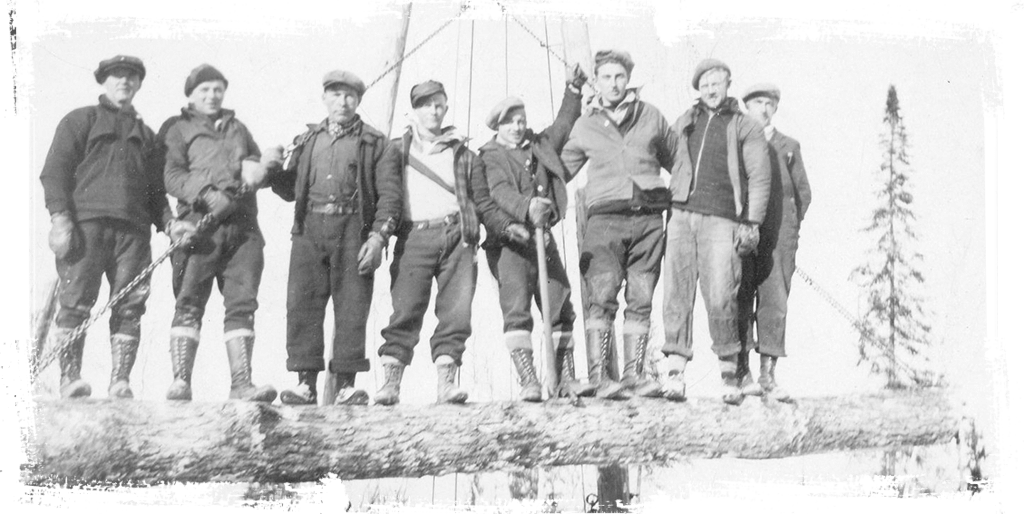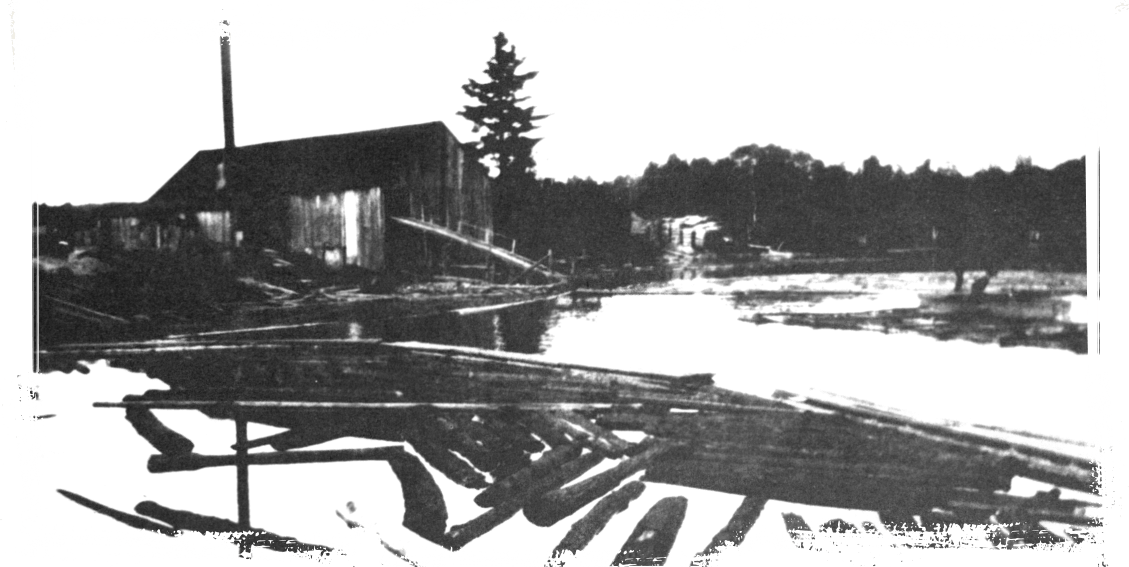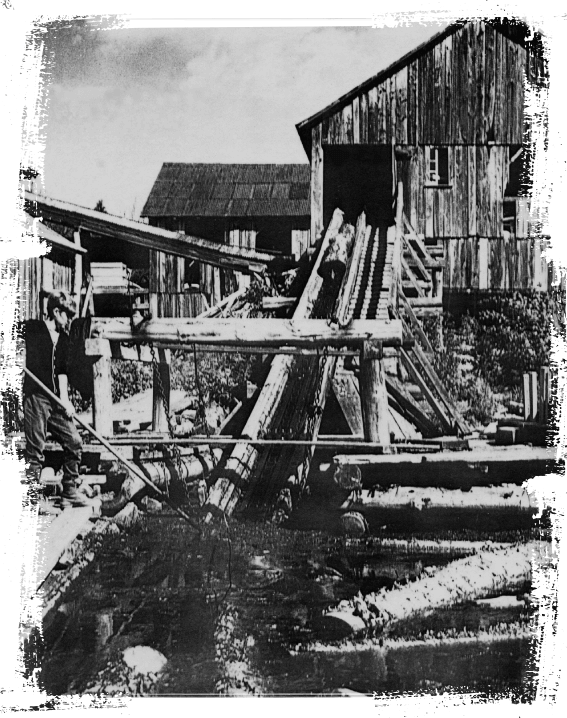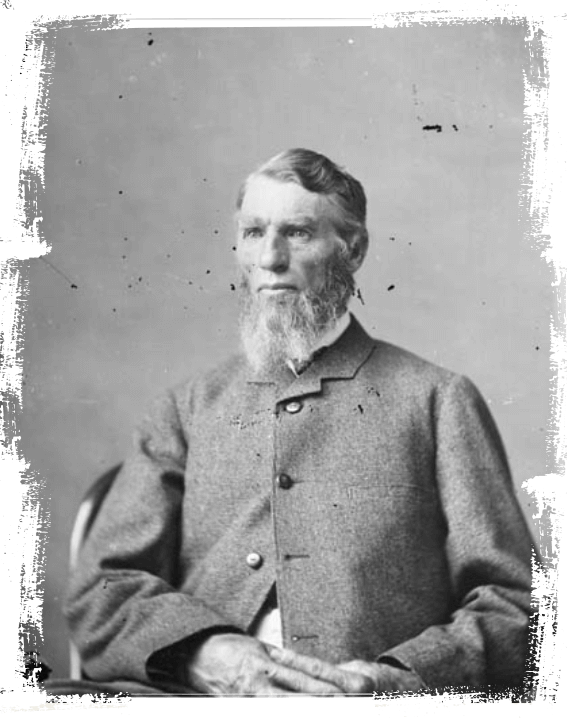Logging rights in the time of Free Land Grants were retained by the lumber barons of the day, which in Machar Township were eventually held by JR Booth. It was a hard lesson learned by James Jones in the 1880s when he cut and hauled more than 500 white pine logs to a mill at the Narrows to build a home and pay for the milling of the lumber.
Booth’s agents seized 440 logs, skidding them away to be floated to Ottawa without any compensation for the months of Jones’ hard labour. The lesson was not lost on William Smyth of Midford Bay on Eagle Lake who guarded his logs with a bad attitude and a loaded gun for three weeks until the roads melted and Booth’s men moved on.

Men at Camp (1920)
The first permanent dam structure at the top of the South River falls was built by JR Booth in 1884 to hold back water for floating logs down the South River to Lake Nipissing to be barged across and shipped by rail to the Ottawa River to complete a two-year journey, rather than use a competing railway.

On J.R. Booth:
J.R. Booth fingerprints were left far beyond the borders of Machar Township. He was considered a Canadian lumber tycoon, controlling logging rights for large swaths of forests throughout Central Ontario.
Booth came from humble beginnings, known as a relatively uneducated carpenter who built bridges, a sawmill, and briefly owned a shingle business. But eventually, he got a contract to provide timber for the parliament buildings in Ottawa, and then gained timber rights of approximately 250 square miles of pine in Algonquin Park.
He built the Canada Atlantic Railway as a means to transport his lumber to the United States, and had the largest business run by one man in the British Commonwealth when he finally incorporated in 1921 at the age of ninety-four. He died in 1925 in his ninety-ninth year.



The largest load of wood ever seen? 13 cords brought into South River by horse (C.1900)

